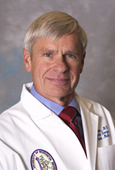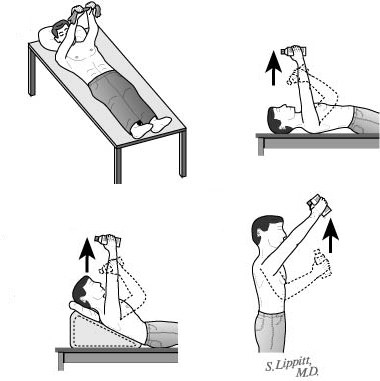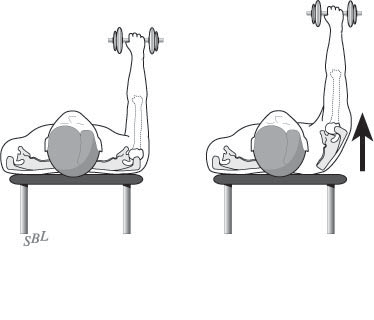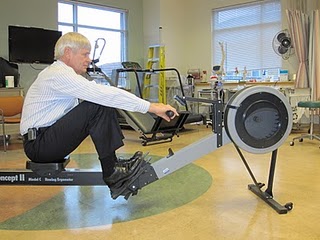
Last updated: February 4, 2013
Follow our blog
http://shoulderarthritis.blogspot.com/
On which we try to provide the best and most current information on shoulder arthritis.
Contact
If you have questions regarding this rehabilitation program, feel free to email Frederick A. Matsen III M.D. at matsen@uw.edu.
Download in pdf format.
Rehabilitation is critical after shoulder arthroplasty.
The program below has proven safe and effective for many patients having shoulder joint replacement. It is designed to first optimize flexibility and then progressively build strength. It avoids stretching in directions that may jeopardize the repair.
Arthritic shoulders are stiff. Although a major goal of the surgery is to relieve this stiffness by release of scar tissue it may stiffen up during the recovery process. To prevent stiffness rehabilitative exercises are started by our experienced shoulder therapists immediately after surgery using continuous passive motion and stretching by the patient.
In order for proper healing to occur the patient must attain and maintain the 150 degree range of forward elevation achieved at surgery. Achieving this range of motion within the first few days of the procedure is critical to the success of this procedure.
Phase I
For the first 6 weeks of the recovery phase the focus of rehabilitation is on maintaining this range of flexion. Avoid stretching in other directions and strengthening exercises for the first six weeks to avoid disrupting the soft tissue healing. During this time lift nothing heavier than a cup of coffee. The role of the therapist is to assure that this range of motion is maintained.
If there are concerns about swelling clicking popping pain redness drainage or anything else let your surgeon know.
Thirty to sixty minutes of aerobic exercise a day (stair climber treadmill brisk walking stationary bike etc.) is very helpful to the recovery process and is strongly recommended.
Driving should wait until the patient can perform the necessary functions comfortably and confidently. We recommend waiting to drive for six weeks if the surgery has been performed on the right shoulder because of the increased demands on the right shoulder for shifting gears. Driving is recommended only after the shoulder has regained comfort and the necessary motion and strength. Thus the patient needs to be prepared to have less arm function for the first month or so after surgery than immediately before surgery. Patients often require some assistance with self-care activities of daily living shopping and driving for approximately six weeks after surgery. Management of these limitations requires advance planning to accomplish the activities of daily living during the period of recovery.

The supine stretch
in flexion

The forward lean

The pulley
Phase II
Maximal effort is needed to maintain at least 150 degrees of flexion five times a day until this is easy and comfortable. After this range is comfortably achieved and after 6 weeks gradually increasing load can be applied in the two-hand supine press series shown below. We start with two hands together on a washcloth pushing both hands to the ceiling while lying flat. Next the same movement is performed with the one hand alone holding a very light weight. The weight is gradually increased as is the angle of sitting up until the hand can lift one pound overhead. With each level of exercise lift the shoulder off the table as shown in the figure to the right below. The rule is that the shoulder needs to be able to do 20 repetitions comfortably and smoothly at one level before graduating to the next step. It is CRITICAL however that no strengthening exercise cause discomfort that last more than a few minutes after its completion. Some individuals in their enthusiasm have pushed so hard that the healing process is disrupted.

Deltoid Press

Press
During this time the 'Traction 3' can help the shoulder regain range and coordination:
(a) the gravity swing in which a light weight held in the hand is allowed to swing gently while the patient bends over at the waist
(b) the row where slow relaxed pulls on a rowing machine stretch out the shoulder and
(c) the lat pull where light resistance is allowed to stretch out the joint.

The gravity swing

The row

The lat pull